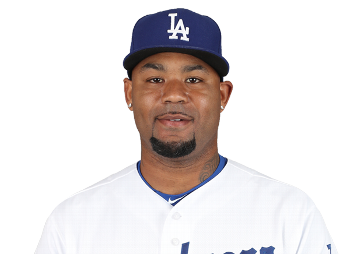
Carl Crawford: Disappointing!
2011 Season
AVG HR RBI OBP
.255 11 56 .289
_________________
Career
.293 115 648 .333
Carl Crawford’s first season in Boston was not what anyone was looking for. He displayed career-worst ct%, xBA and Spd while misplaying left-field all year long to the tune of a negative UZR and a replacement-level season. That’s a replacement-level season for $14 million. Crawford’s WAR (Fangraph wins-above replacement player) was 0.2.
Did you know Crawford’s 2011 performance graded out as a $900,000 player? If you knew you were getting a $900,000 player, he would only be a bench guy. Crawford gave the Red Sox the production you could reasonably expect from any street-free agent over the course of a full year.
A street free agent.
What’s worse for Crawford is that his salary jumps to $19.5 million next year so if he thinks the pressure is enough in Year 1, it’s going to jump two-fold in Year 2 with all of the doubting eyes staring him in the face as soon as the season starts.
Normally a player with good contact skills and speed, Crawford’s 2011 featured a 79% contact rate and league-average speed. In a nutshell, he was Darnell McDonald, but for 14 times the price.
It’s a little depressing to think that he may not be able to assimilate to his new surroundings. A lot of people question whether he is cut out to play in Boston. Does he now secretly long for Tampa Bay? He was supposed to be out west anyway with the Angels, but the Red Sox came in and stole him. I remember he was shocked that they did it. He was excited and signed the big contract, but maybe he didn’t fully-realize what he was getting himself into.
Maybe Crawford feels fine with this city, I’m just speculating, but my gut says he doesn’t feel right. He didn’t look right. He looks to me like Chad Ochocinco of the New England Patriots -– here but not really here. It’s a shell of what we knew or expected.
Crawford took to swinging at more balls outside of the strike zone in 2011 and in turn, made less contact with them as well. That’s not a good recipe for success. How many times did we see him pop one up to center field and then drop his head in shame as he left the batter’s box? His .290 OBP was a combination of his already less-than-average EYE and the fact that his BABIP was well-below his career norms. Partly a lack of fortune, but mostly it was just weakly-hit balls.
Crawford’s softly-hit ball percentage was 26% in 2011, which is a 10-point jump from 2010 and his career norms. Before ’11, Crawford hit about 16% softly and everything else either medium or hard. This is why his BABIP was below .300 – over a quarter of balls in play were hit weakly. Weakly-hit balls do not lead to hits, they usually lead to outs.
So what happened? Everyone is entitled to a bad month or even a year, but this season was so uncharacteristic, that people want to put their fingers on it. Why was he so bad in the outfield? He had always been a plus-defender but in 2011, he was a negative value in the field.
Another thing to look at is his pitch-type value. Basically, what were the outcomes over every pitch he saw by type of pitch? In 2009 and 2010, Crawford was a +9.0 and a +11.2 against the fastball. In 2011 he was -9.9. How’s that for a complete 180-degree turn?
When Crawford signed in Boston, we thought he was the best chance at becoming a next-level superstar. Strangely enough, it was our own homegrown Jacoby Ellsbury who was ready to burst. Crawford regressed back to an output he gave in 2003 when he was just a second-year player in Tampa Bay.
The 2011 season ended on Crawford’s glove. It would have been a tough play for him to make against the Orioles, but the chance was there for him to redeem a bad season. Unfortunately, the play ended unsuccessfully and fittingly closed the door on the team and their new $142 million outfielder.
We gave him the benefit of the doubt this summer, but in 2012 all eyes will be on Crawford from the second training camp starts in February.
